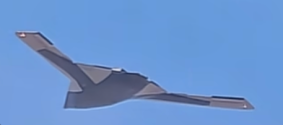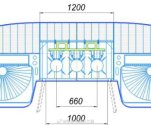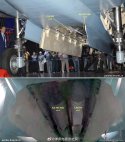I know some people are poo-pooing the idea of the bay configuration depicted, but take a look at the Su-57 bays and see how far back the rear one goes. Just a general observation, as we don't yet know the true H-20 configuration.
Yes, we are "poo-pooing" at the idea of the depicted bay configuration because that particular bay configuration is an absolute "poo-poo" by itself.
Here's what you see on the Su-57:
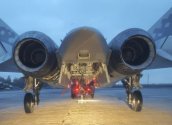
But here's what you
don't see on the Su-57:
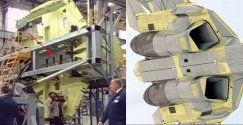
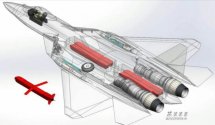
As a matter of fact, the main IWBs on the Su-57 aren't actually that deep. Each of those main IWBs can fit 3x LRAAMs in parallel, or 2x smaller-diameter cruise missiles (Kh-69) in parallel. This design is pretty typical for stealth fighters.
In the meantime, here's what the Kh-69 (~410mm diameter) compared to hypersonic strike missiles that fit inside the UVLS cells of the PLAN DDGs (~800mm diameter) looks like:
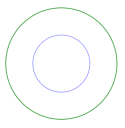
Notice how one is almost double the diameter of the other?
This aside - We haven't even talked about the possibility of the H-20 carrying large-sized strategic missiles in the same category as the JingLei-1. Such missiles would mean diameters that will most likely hover around if not go right past the 1-meter mark.
Moreover, since we're talking about the H-20, which is a
strategic bomber - Ever considered avenue of the rotary launchers inside IWBs? Here's one inside a B-1B, unloaded (top/left) and loaded (bottom/right, with humans for scale):
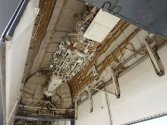
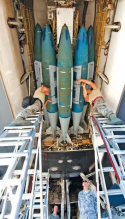
The average US male is ~1.75 meters tall. I believe this should provide a rough visual on how big the IWBs on the B-1 are. The IWBs on the B-2 and B-21 are more or less of similar configurations.
So unless you want the H-20's rear side profile to look like a continental shelf transition profile (which is a rather big no-no for VLO platforms), then what is being depicted in the CGI by that guy is a non-starter.








